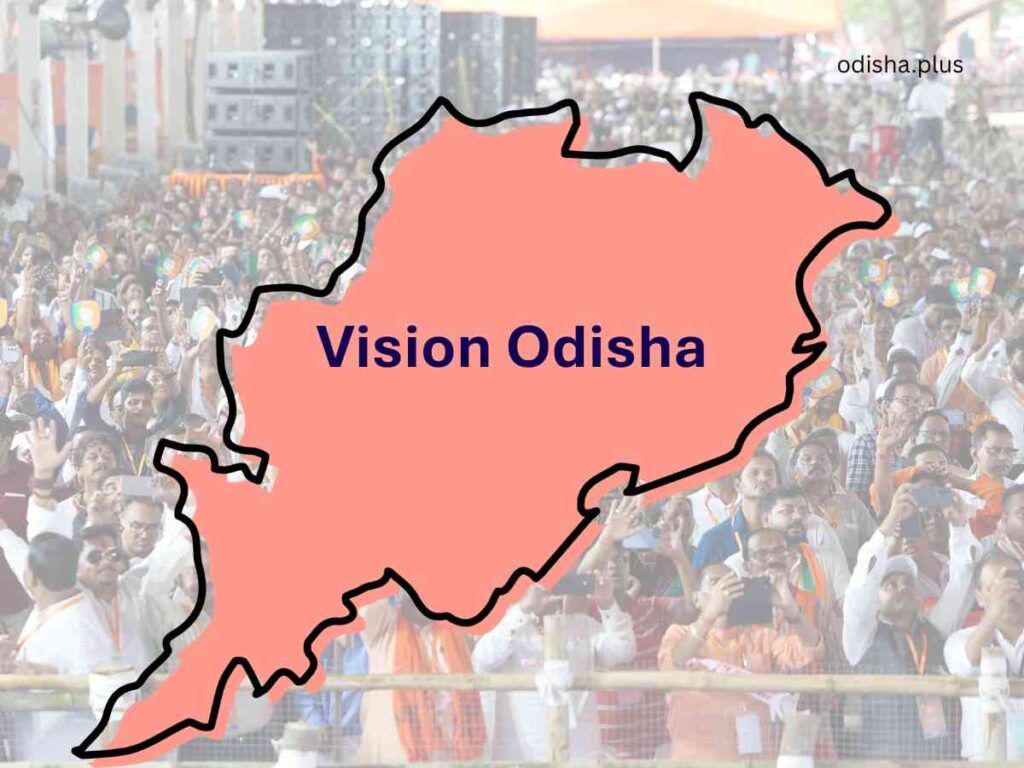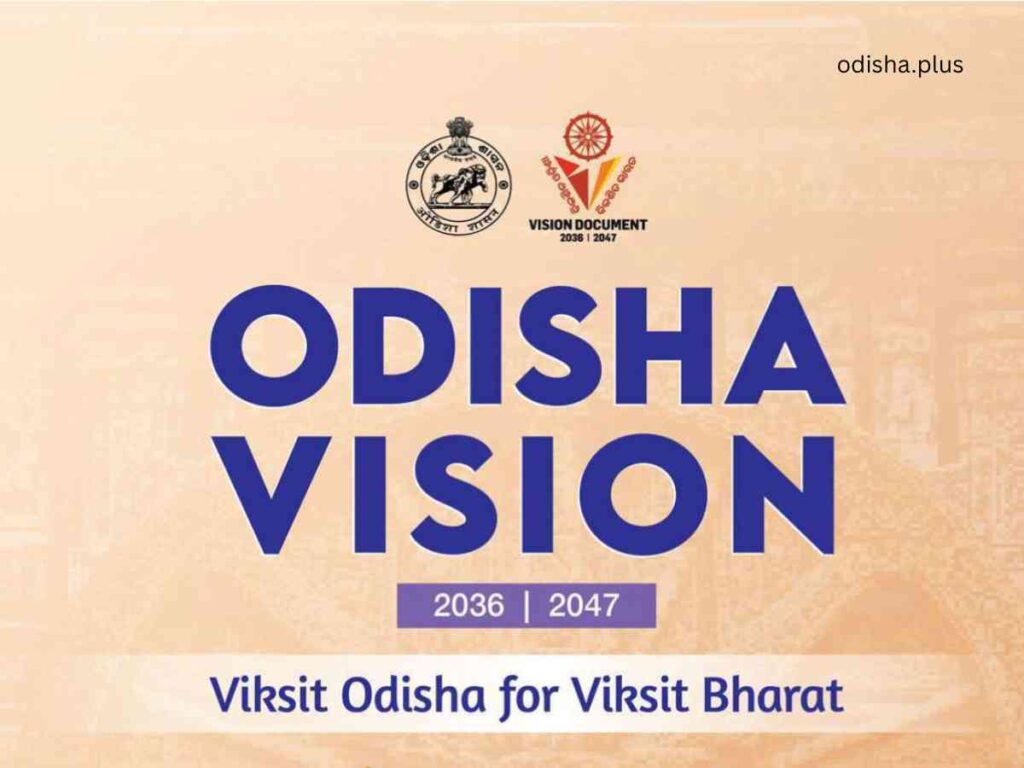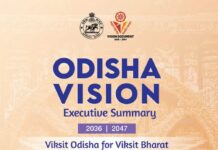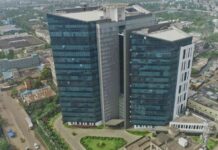The vision sets bold targets, aiming for a USD 500 billion economy by 2036 and USD 1.5 trillion by 2047
Pradeep Biswal

Prime Minister Narendra Modi released the vision document of Odisha recently in Bhubaneswar. It is the outcome of a series of consultations with key stakeholders and public opinion gathered through various sources.
The Odisha Vision 2036 document, often presented alongside the Vision 2047, is an ambitious roadmap aimed at transforming Odisha into a leading state in India. It will coincide with the state’s centenary in 2036 and India’s 100th anniversary of independence in 2047. No doubt it’s a comprehensive plan that touches upon various facets of development, from economic growth to social equity, infrastructure, and governance.
Here’s a critical analysis, considering its strengths, weaknesses, and the challenges in implementing it.
The vision sets bold targets, aiming for a USD 500 billion economy by 2036 and USD 1.5 trillion by 2047. Such ambitious goals can galvanize efforts and attract significant investment in the future. Economists are uncertain whether this is possible to achieve, given the present growth rate of the economy.
The document is built on six key pillars: People First, Rural Empowerment, People-Centric Governance, Prosperity for All, Our Legacy, Our Pride, and Technology Leading the Way. This indicates a comprehensive approach, covering economic, social, cultural, and governance aspects. This is a significant departure from the past approach.
The vision identifies crucial sectors for growth, including manufacturing (with a significant investment requirement), mining, green industries (semiconductors, EVs), and MSMEs. This strategic focus can leverage Odisha’s natural resources and emerging opportunities, including tapping the human resources in a big way.

The plan prioritizes human development through quality education, healthcare, nutrition, and livelihood opportunities. It aims for 100% literacy, 100% gross enrollment ratio, and zero dropouts, along with skill development initiatives like “Skilled in Odisha” to enhance the employability of the youth.
A significant focus is placed on empowering women through employment, entrepreneurship, and leadership initiatives (e.g., Lakhpati Didi and Subhadra Plus schemes). This is crucial for inclusive growth and empowerment of women at the grassroots level.
The vision outlines plans for rapid urbanization (from 17% to 40% by 2036), transforming cities, developing industrial mega-parks, and ensuring 100% pucca housing, piped water, sanitation, and electricity access. This foundational infrastructure is vital for sustained growth. The cities will emerge as growth engines for the economy.
The document emphasizes leveraging technology, including AI for public data analysis and digital agriculture technologies, to guide policymaking and improve efficiency. This will be a paradigm shift in governance architecture.
: The vision document has reportedly incorporated suggestions from over 320,000 citizens and the Odia diaspora, utilizing AI for analysis. This participatory approach can foster ownership and ensure the relevance of the document for the stakeholders. The vision aligns with the broader national aspiration of “Viksit Bharat by 2047,” which can facilitate support and synergy with central government initiatives in the future.
Yet, potential challenges remain. While ambition is a strength, the sheer scale of the economic targets (e.g., USD 500 billion by 2036, 15 times the current size by 2047) raises questions about their practical achievability within the given timeframe, especially considering Odisha’s current economic base. Economists don’t think it’s achievable with the current economic structure and growth rate.
The cumulative investment requirement is substantial (INR 70-80 lakh crore by 2047). Securing such massive private and public investment will be a significant challenge, requiring a highly conducive business environment, stable policies, and effective project implementation. Going by the records of the state in inviting private investment, it’s not feasible.
While mining and manufacturing are key drivers, over-reliance on a few sectors could make the economy vulnerable to global commodity price fluctuations or industrial downturns. Diversification, while mentioned, needs robust strategies. Tourism, agricultural production, and seafood production can provide opportunities for growth in a sustainable way.
Rapid industrialization and urbanization can put immense pressure on the environment. While “green industries” are mentioned, detailed plans for balancing growth with environmental protection, especially concerning forest cover (projected to shrink) and water resources, need rigorous oversight and innovative solutions. The state is quite vulnerable to climate change impacts in the form of floods, cyclones, and sunstroke. This has to be addressed properly.
Achieving 100% literacy and significant skill enhancement requires not just institutions but also robust reforms in education quality, teacher training, and vocational relevance. Bridging the gap between skills produced and industry demands will be crucial in this regard.
Odisha has historically faced significant regional imbalances. While the vision talks about inclusive growth, specific strategies to uplift backward regions and ensure equitable distribution of development benefits need careful articulation and implementation. The experience in setting up Development Councils for different areas is not so encouraging. It needs a more holistic approach.
Implementing such a large-scale vision requires highly efficient, transparent, and responsive governance. Issues like corruption and red tape, historically prevalent, need sustained efforts to overcome. The shift towards “political leadership over bureaucratic dominance” might have implications, both positive and negative, on administrative continuity and expertise. It needs a dedicated and committed workforce to deliver positive outcomes in a given time frame.
While it seems conceptually strong, institutionalizing true collaboration across government departments, the private sector, civil society, and citizens can be complex and require strong leadership and coordination mechanisms. or as we call the “Whole-of-Government, Whole-of-Society” Approach.
While aiming for higher cropping intensity and farmer income is good, the document needs detailed strategies for climate-resilient agriculture, market linkages, and addressing the challenges faced by small and marginal farmers. The state is yet to have a tenancy law to protect the interests of farmers. Irrigation is a major challenge for farmers, and the progress in this regard is highly unsatisfactory. Care has to be taken to address these issues.
The Odisha Vision 2036 document is an ambitious and well-intentioned blueprint that recognizes the state’s potential and outlines a comprehensive path to prosperity. Its strengths lie in its holistic approach, focus on human development, and emphasis on key economic drivers and technology. However, the sheer scale of the targets presents significant implementation challenges, particularly in resource mobilization, environmental sustainability, and ensuring equitable development across all regions.
For the vision to truly transform Odisha, critical attention will be needed to develop robust implementation strategies, Effective monitoring and evaluation, strong political and administrative efficiency, and promoting genuine public-private partnerships.
To conclude, the Odisha Vision 2036 is a commendable statement of intent, barring a few omissions and commissions. Its success will depend on the ability of the state government to translate these grand aspirations into tangible, inclusive, and sustainable development outcomes for the people of Odisha. Let’s hope it secures at least seventy to eighty percent of the targets if not the full mark in the long run.
(Pradeep Biswal, retired IAS Officer, is a bilingual poet writing both in Odia and English. His poems are widely anthologized. He is also an editor and translator of repute. Views are Personal)
























